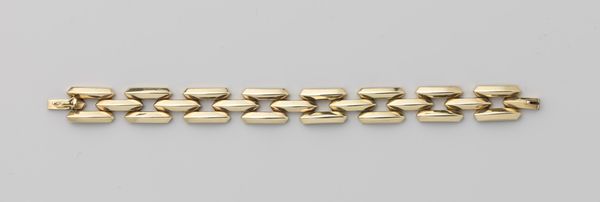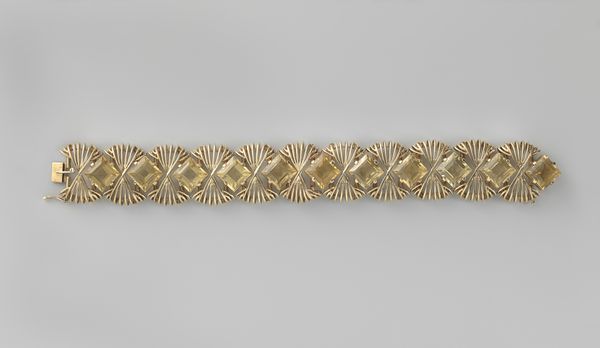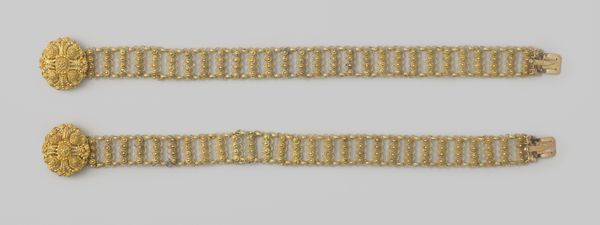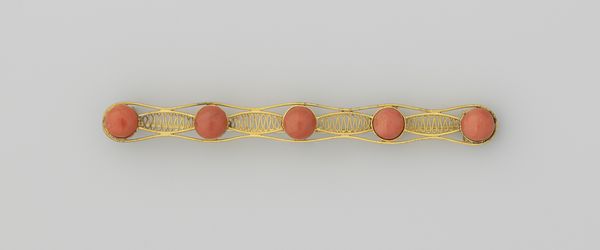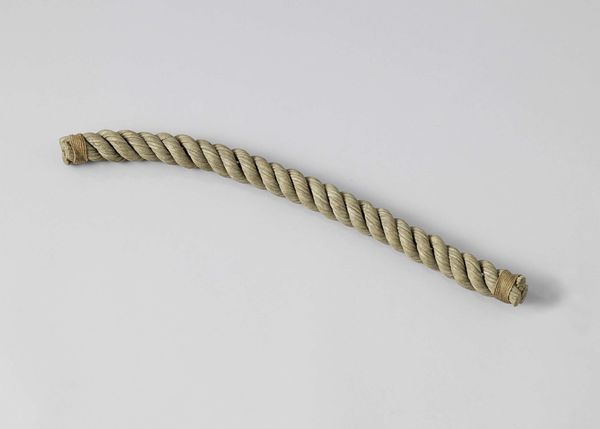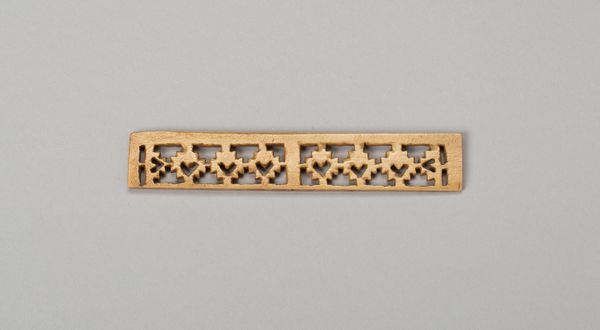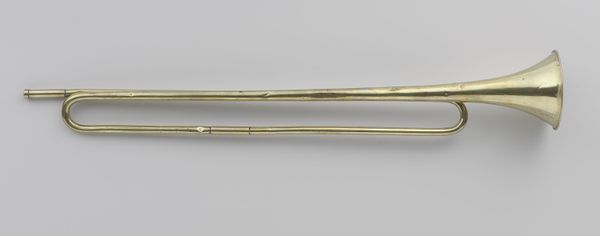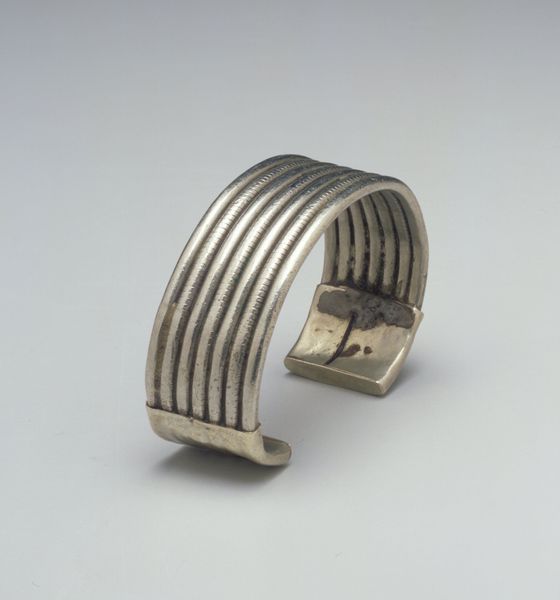
Gouden schakelarmband met geribde schakels c. 1930 - 1950
0:00
0:00
silver, metal
#
art-deco
#
silver
#
metal
#
decorative-art
Dimensions: length 19.8 cm, width 1.3 cm, depth 0.5 cm, weight 11.5 gr
Copyright: Rijks Museum: Open Domain
Editor: We're looking at a gold link bracelet with ribbed links, crafted sometime between 1930 and 1950 by the Koninklijke Utrechtsche Fabriek van Zilverwerken van C.J. Begeer. It’s currently held at the Rijksmuseum. There’s something about the geometry of it, these rigid forms, that feels very... restrained. How do you interpret this work? Curator: Considering the historical context is vital. This bracelet emerged from the Art Deco movement, which sought to break from the perceived excesses of previous eras. The use of gold and the emphasis on geometric shapes are very characteristic of the time. We need to also consider who had access to adornment like this during the mid-20th century, and what that meant in terms of class and social standing. It certainly speaks to a certain degree of economic privilege, wouldn't you agree? Editor: Absolutely. It seems less about ostentatious display and more about… quiet affluence, perhaps? What do you make of the repeated ribbed pattern on each link? Curator: The repetition, I think, introduces a dialogue between individuality and mass production, between high-end design and the growing industrial capacity of the time. Also, gold itself has such a long history, loaded with symbolism and colonial associations. Considering its use in the past century, one can reflect on the power dynamics it represents. What message do you think someone wearing this piece would be conveying? Editor: Maybe a desire to align themselves with that sense of streamlined modernity, or even project an image of financial security and status. This analysis makes me think about jewelry in a different light - almost like wearable manifestos! Curator: Exactly! It's a small object, yes, but it embodies a complex web of cultural and political meanings. Recognizing these layers helps us engage critically with art, not just admire its aesthetic qualities. It also makes one think, "who *isn't* represented by such items?"
Comments
No comments
Be the first to comment and join the conversation on the ultimate creative platform.

